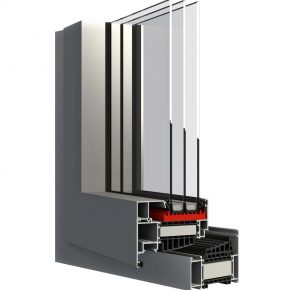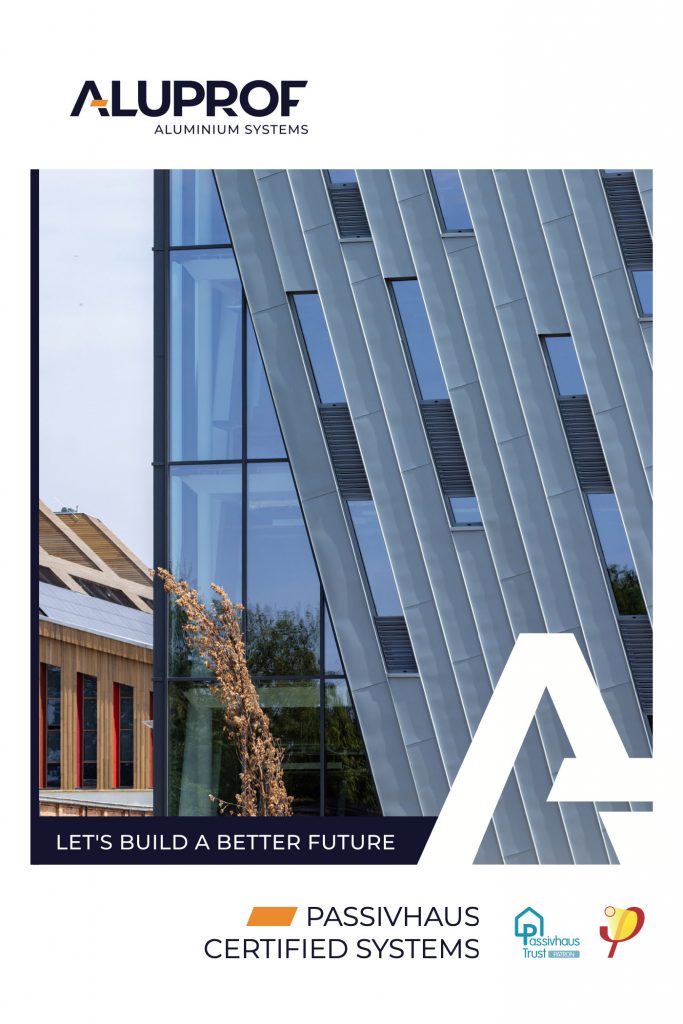
Aluprof UK: Scotland Leads the Way to Passivhaus Homes
Within two years, all new homes built in Scotland will be built to a Scottish equivalent of the Passivhaus standard. This is a huge shake up in legislation which is already gaining attention from around the globe, according to Wojciech Brożyna, MD of Aluprof UK, who writes the following piece…
Alex Rowley, MSP for Scotland, proposed the Domestic Building Environmental Standards (Scotland) Bill, brought as a Private Member’s Bill to the Scottish Government. The bill was in response to the ‘Scottish Climate Assembly Recommendations for Action’, where 97% of members voted in favour of the Passivhaus standard for new build projects in Scotland.
Patrick Harvie, Minister for ‘Zero Carbon Buildings, Active Travel and Tenants’ Rights’, announced on 10 January that the Scottish Government has decided to make subordinate legislation within two years, to give effect to the Bill.
‘Absolutely delighted’
Patrick comments: “I have been absolutely delighted by the positive response to my proposal for legislation on introducing a Scottish equivalent of Passivhaus standards to all new-build housing in Scotland and I am very happy that the Scottish Government has taken the opportunity to put my proposal into law.
“We have the knowledge and technology to build houses fit for the future with occupant comfortability as a priority at a fraction of the heating costs of a standard build house now, it simply seems obvious to me that we should be doing this.”
Jon Bootland, CEO, Passivhaus Trust, comments: “It is a truly forward-thinking approach by the Scottish Government and a positive response to the 2021 Scottish Climate Assembly recommendations. They are to be applauded for taking this crucial step towards meeting their Net Zero/ Climate Emergency goals. Now we must ensure that the Bill is well developed and implemented to deliver the greatest impact on the actual performance of new homes in Scotland.”
New homes are not the only type of buildings targeted by this new legislation. A recent positive development in Scotland has been the funding criteria recently established for the ‘Scottish Futures Trust’s’ (SFT) ‘Learning Investment Programme’.
Projects receiving funding need to meet a critical energy target of 67 kWh/m2/year, a comparable target with a typical new build Passivhaus school. Funding may be reduced based on any performance gap post-completion. Adopting the Passivhaus standard eliminates the performance gap, de-risking securing funding, which has led to a significant uptake in the Passivhaus standard in Scottish educational buildings.
So what is actually is ‘Passivhaus’ and why is it so important?
There are five key elements to understand about Passivhaus, first and foremost, Passivhaus is fundamentally about the concept of integrated design, where the whole building team are involved at the outset.
Whilst it may seem that Passivhaus is designed just for northern climates, this is not the case, as different geographical locations offer differing challenges, this is the second key element as well designed Passivhaus structures can effectively help to cope with heatwaves which are more frequently experienced in any part of the world.
Orientation, the third key element, has a part to play in ensuring that solar heat gains are optimised. The fourth key element, is the building form, whilst a Passivhaus construction can take any form, physics suggests that with a convoluted shape, which offers a resulting greater surface area for a given space, will allow more heat loss.
‘Fabric first’
Finally, the fifth element is that of the construction system itself. Passivhaus takes a ‘fabric first’ approach and, whilst any material can be utilised, the focus on airtightness and thermal insulation are paramount.
Thermal bridges are to be avoided at all costs to maximise heat retention, and of course, in certain climates and various times of the year, also keeping the heat of the day out. It is the building fabric that does all the heavy work in Passivhaus design.
Included in the design is the crucial element of fresh outdoor air being circulated inside being warmed/cooled with an efficient heat recovery system, warm air going out, heating the cold air coming in and visa versa, so that energy consumption is kept at a bare minimum. These systems can offer up to an 85% efficiency. The best use of natural daylight, including some solar gain where required, further enhances the energy savings in this unique form of construction.
Designing high insulation wall elements can be relatively straightforward, but when these elements are perforated by windows and doors, robust detailing is needed to minimise thermal bridging and maximise air tightness. Window and door systems chosen must offer the highest levels of thermal insulation including the adoption of triple and quadruple glazing.
About Aluprof
Few systems meet these high performance characteristics, most are supplied from aluminium systems companies with wide, high performance thermal breaks. Aluprof, one of Europe’s leading aluminium systems companies, offer a wide range of systems that are continuously specified by architects to meet the requirements of Passivhaus design.
One of the largest systems companies in Europe, in 2022 Aluprof lead the fenestration industry in the UK by becoming a patron member of the UK’s Passivhaus Trust. Working together with the Trust and other business partners Aluprof works with specifier’s to help detail high thermal performance designs. Aluprof in the UK has over 50 case study projects completed and currently being built in Scotland.

With Aluprof’s MB-104 system, both windows and doors can confidently be specified as the system has gained the Passivhaus Institute’s certification. The MB-104 Passive Aero has excellent thermal insulation performance for an openable window system with a Uw as low as 0.53 W//m2K and for a door with a UD as low as 0.62 W//m2K.

With glazing widths up to a class leading 81mm in thickness, the doors can also be assembled into panel doors as well as fully glazed. Where larger glazed areas are required, Aluprof’s MB-TT50 stick curtain wall can offer a UCW down to 0.59 W/(m2K) using up to 64mm thick triple or quadruple glazing units of up to 1,100 kgs.
It is important to remember that Passivhaus is not only for new build homes, there are many examples of commercial offices, student accommodation and retrofit schemes that can benefit from being constructed to meet the Passivhaus standard, more information is available on the UK’s Passivhaus Trust website at passivhaustrust.org.uk.
Contact Aluprof
Further information on Aluprof UK’s Passivhaus systems is available on the company website at aluprof.co.uk or directly from their UK head office in Altrincham on 0161 941 4005.
Latest news

26th July 2024
Enfield Speciality Doors completes world-class project for Atlas Copco HQ
A rundown office and warehouse building completely transformed into a modern headquarters for Atlas Copco has been fitted with more than 120 internal fire doors from Enfield Speciality Doors.
Posted in Access Control & Door Entry Systems, Articles, Building Industry News, Building Products & Structures, Building Systems, Case Studies, Doors, Interior Design & Construction, Interiors, Posts, Restoration & Refurbishment, Retrofit & Renovation, Security and Fire Protection, Sustainability & Energy Efficiency, Timber Buildings and Timber Products, Wooden products
26th July 2024
Abloy UK launches new white paper
Abloy UK, a leading provider of security and access control solutions, has launched a new white paper.
Posted in Access Control & Door Entry Systems, Architectural Ironmongery, Articles, Building Industry News, Building Products & Structures, Building Services, Doors, Facility Management & Building Services, Health & Safety, Information Technology, Innovations & New Products, Publications, Research & Materials Testing, Security and Fire Protection
26th July 2024
MCRMA Member Profile: David Roy, Director of Roofconsult
David Roy of MCRMA member company Roofconsult has more than 50 years’ experience to draw upon working in the building envelope sector and a unique perspective on how it has changed in that time.
Posted in Articles, BIM, Infrastructure & CAD Software, Building Associations & Institutes, Building Industry News, Building Products & Structures, Building Services, Building Systems, Cladding, Information Technology, Restoration & Refurbishment, Retrofit & Renovation, Roofs, Walls
26th July 2024
Strand: Enhancing Door Functionality and Safety
Craig Fox, Sales Director for Strand Hardware, outlines how door industry professionals might apply door limiting stays…
Posted in Architectural Ironmongery, Articles, Building Industry News, Building Products & Structures, Building Services, Doors, Facility Management & Building Services, Health & Safety, Restoration & Refurbishment, Retrofit & Renovation
 Sign up:
Sign up: